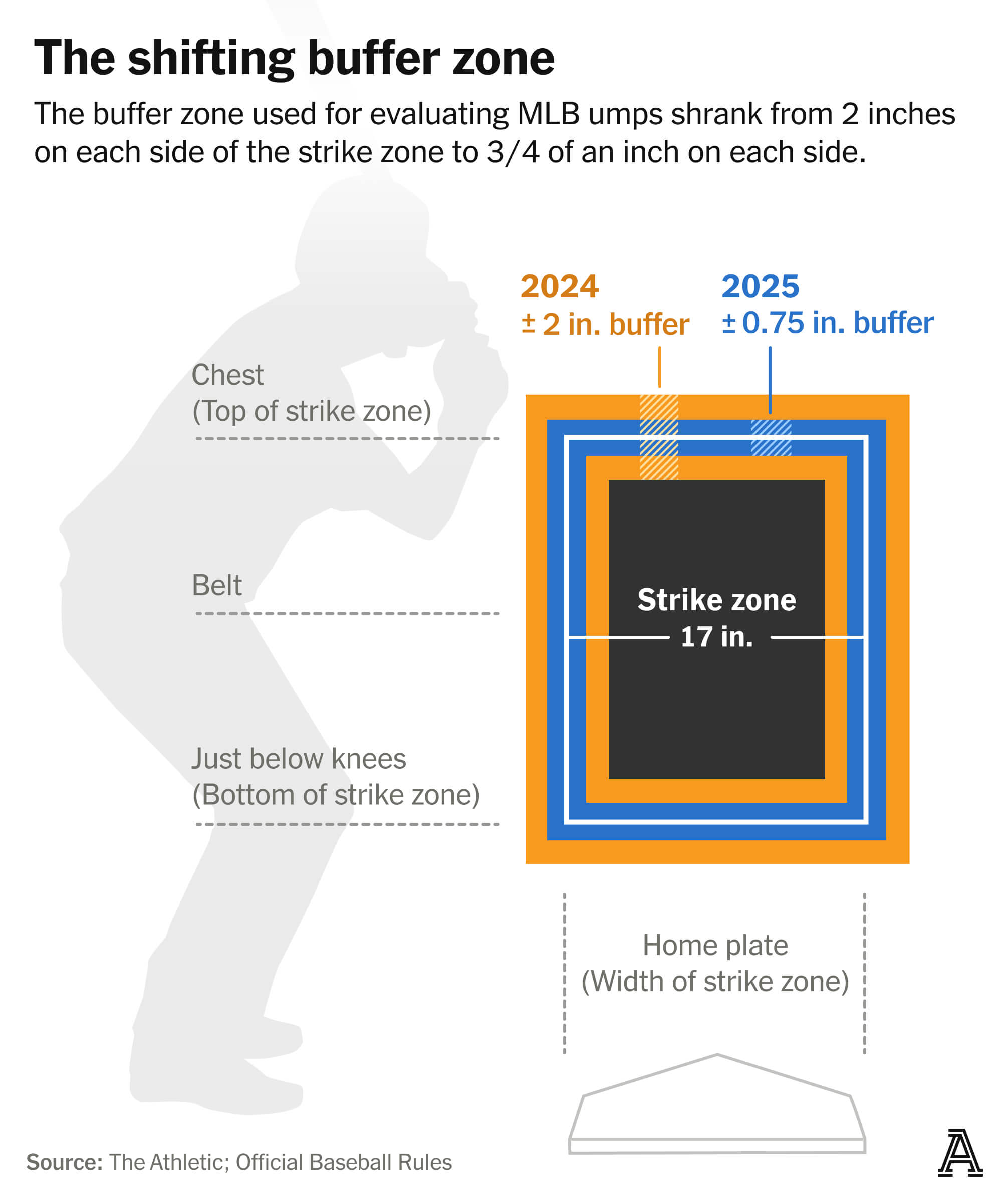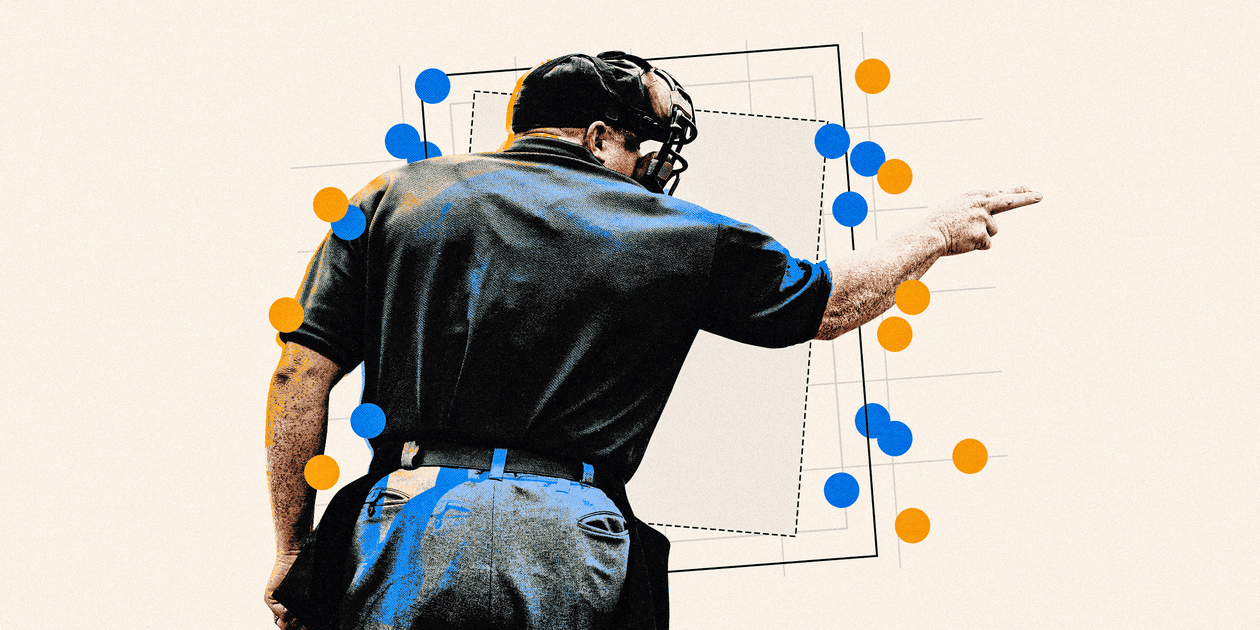By Jayson Stark, Ken Rosenthal and Eno Sarris
Last winter, Major League Baseball negotiated a seemingly simple change in how home-plate umpires are graded and evaluated. But now, a month into the season, its impact on balls and strikes has players asking questions about what they believe is a tightened strike zone — and searching for ways to adjust to a new wrinkle they say caught them by surprise.
That change, which was part of a new labor agreement with the Major League Umpires Association, significantly decreased the margin of error for umpires in their evaluations — and has resulted in fewer called strikes off the edges of the plate through the same point as last season.
“Everybody’s zone has shrunk,” Angels catcher Travis d’Arnaud told The Athletic. “Every (umpire) across the league.”
The actual number of pitches affected is relatively small. But the reaction — from pitchers, catchers, pitching coaches and analytics-driven front offices — has been anything but. They say the shift in how balls and strikes are now called is already having an impact on game-planning, pitch sequencing, pitch framing techniques, evaluation models and even roster construction.
For the past two decades, umpires were working with a “buffer zone” that gave them 2 inches of leeway — on all sides of the plate, inside and outside the strike zone — when they were graded on how accurately they called balls and strikes.
Now, however, that buffer zone has shrunk, from 2 inches on all sides to just three-quarters of an inch on all sides, inside and outside the strike zone, according to league sources briefed on the change but not authorized to discuss the matter publicly. An MLB official confirmed that the buffer zone had decreased in size.

The intent of the buffer zone change is simple: to call the rulebook strike zone more accurately. But the real-life impact seems to have caught pitchers and catchers in particular off guard, even though the definition of the actual strike zone remains the same.
“I was unaware of that,” Phillies reliever Matt Strahm said of the change. “I thought everything was going to be normal after spring (training, when MLB tested an electronic ball-strike challenge system). Go back to what we’ve been doing. I guess I wasn’t aware that the (buffer zone) has shrunk.”
An MLB official said, “The rulebook strike zone has not changed and we have not instructed umpires to call a different strike zone. In response to consistent player and club desire to have umpires evaluated more closely to the rulebook strike zone, we agreed with the MLB Umpires Association in their new CBA to reduce the size of the ‘buffer’ around the border of the strike zone, which essentially protects an umpire from being graded ‘incorrect’ on extremely close misses.
“We informed the GMs and Field Managers that we were seeking this change during the offseason,” the official said, “and again informed the Clubs when the umpire CBA was ratified. Overall ball-strike accuracy in 2025 is the highest it has ever been through this point in the season.”
The data shows that this season’s strike calls are the most accurate since Statcast began tracking pitches in 2015.
